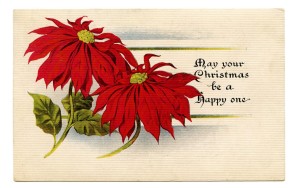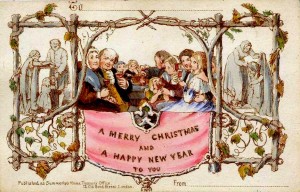Perhaps more than any other holiday, Christmas is a time of tradition. The lights, trees, gifts and food – not to mention a portly gentleman in a red suit – make it a special time of the year.
But, have you ever wondered why we decorate trees and kiss under the mistletoe? Why do we hang stockings over the fireplace? Who is this Santa guy anyway? I thought that I would look into the origins of some festive traditions and discover why evergreen trees and plum pudding somehow became associated with the Christian celebration of the birth of Jesus.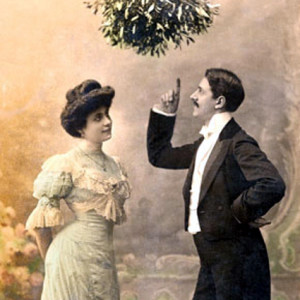
Why December 25?
The word “Christmas” is derived from the Old English “Cristes Maeses” – literally, the Mass of Christ. It is likely that the Catholic Church adopted the date to coincide with the Roman festival of Saturnalia, as well as other older winter solstice celebrations. A lot of the “traditional” features of Christmas – such as mistletoe and holly – were adapted from pagan and druidical practices, probably to make the transition to Christianity smoother for the native populations.
Evergreens were believed to have magical powers due to their ability to thrive during the harsh winter weather. Mistletoe in particular, was revered as a powerful medicine and symbol of peace. In Scandinavia, it was associated with Frigga, the Goddess of Love, which may explain where the tradition of kissing under the mistletoe began.
Christmas Trees
The practice of decorating trees at Christmas began in medieval Germany. It may have arisen with the popularity of a religious play depicting the expulsion of Adam and Eve from the Garden of Eden. The play included a tree festooned with fruit and candles – the Paradise Tree – and was performed around the time of Advent.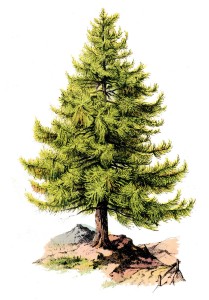
The Christmas tree became fashionable after German born Prince Albert married Queen Victoria and had a tree installed at Windsor Castle every year. An early photograph depicting the royal family surrounding an elaborately decorated pine tree led to widespread adoption of the practice in Victorian England. In the US, German settlers in Pennsylvania introduced Christmas trees. By the end of the 19th century evergreen trees were firmly established as part of the American Christmas tradition.
Santa Claus
The origins of Santa Claus go way back to the 4th century to an area of Asia Minor that we now know as Turkey. St Nicholas was Bishop of Myra and a generous and kindly soul, with a reputation for caring for children. After his death in 340, Italian pirates exhumed his remains and transferred them to Bari Italy, where the myth of St Nicholas was established. His popularity grew to the extent that he became the patron saint of Russia and eventually had his own feast day – December 6; the Feast of St Nicholas – which was marked with gift giving and charity.
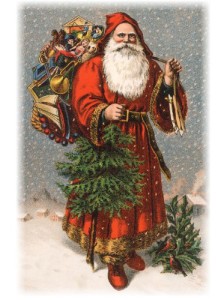 After the Reformation in the 15th century, his reputation dwindled, but was kept alive in the Netherlands where his name was translated as Sinterklauss. Dutch children would leave their wooden shoes out and Sinterklauss would fill them with treats. Dutch colonists brought this tradition to America and gradually the name was Anglicized into Santa Claus.
After the Reformation in the 15th century, his reputation dwindled, but was kept alive in the Netherlands where his name was translated as Sinterklauss. Dutch children would leave their wooden shoes out and Sinterklauss would fill them with treats. Dutch colonists brought this tradition to America and gradually the name was Anglicized into Santa Claus.
The name “Santa Claus” is not ubiquitous, however. In the UK, it is traditional to refer to Father Christmas, or to Pere Noel in France. In Italy, children visit La Befana and in Switzerland and Austria, they have Christkindl (Christ Child). It is possible that the name Kris Kringle comes from a pronunciation of Christkindl. In Spain, Puerto Rico and Mexico, the Three Kings traditionally take center stage.
For a hilarious explanation of the tale of St Nicholas, I urge you to listen to David Sedaris reading his story: “Six to Eight Black Men”.
Christmas Stockings
There is an old story about a nobleman who, distraught by the death of his beloved wife, squandered his fortune and left his three daughters penniless.
St Nicholas, upon seeing the daughters plight, took pity on them and threw three bags of gold down their chimney which landed in the girls’ stockings, hanging by the fireplace. A cautionary tale of naughty children being left pieces of coal instead of gifts in their stockings, has been used by exasperated parents for many generations.
Christmas Cards
While offering greetings to friends and family over Christmas has long been common, it was Sir Henry Cole who is credited with the creation of the first real Christmas card. Sir Henry was the first Director of the Victoria and Albert Museum in London. During the Christmas of 1843, he found himself too busy to compose individual greetings to his friends, and so commissioned the artist John Calcott Horsley to illustrate a card which he printed and sent out. The card depicted a happy family enjoying Christmas and the phrase, “A Merry Christmas and a Happy New Year”.
Poinsettias
The red leaved plant is a native of Mexico and was introduced to the US by the Ambassador to Mexico, Joel Poinsett, in 1828. It is likely that the plant was used by Franciscan missionaries in their Christmas celebrations.